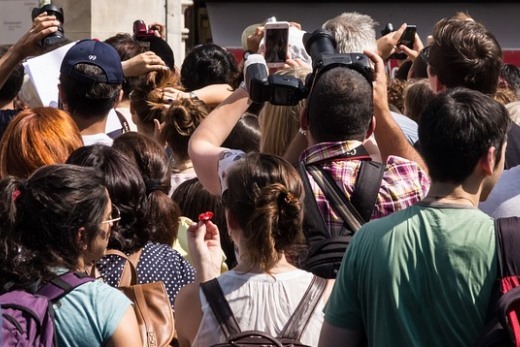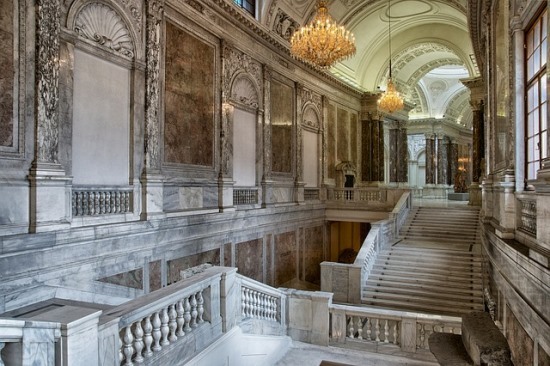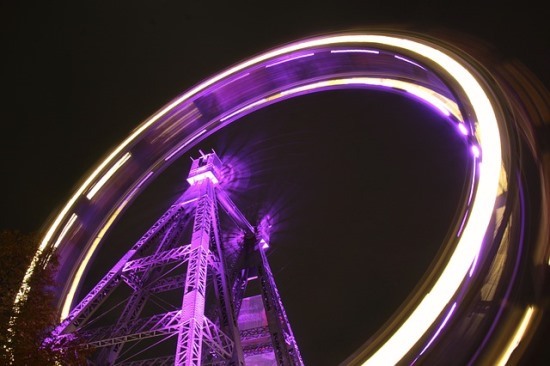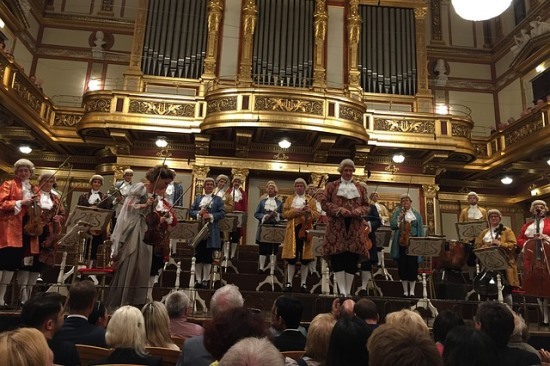Private taxi and minibus transfers from Vienna Airport (VIE)
Easy booking. Punctual and reliable service. Professional, multilingual drivers. Serving passengers since 1998.
Vienna´s Most Important Spots
Vienna has so much to offer... get a hint of things to do and see!
2024-10-15 | TRAVEL GUIDE
Best tourist spots in Vienna Wien Austria
It doesn’t matter if you are visiting Vienna during the summer or the winter months, this city is guaranteed to win your heart.
However, it is crucial not to miss the most important spots and landmarks in the city, so make sure to start exploring once you travel from Vienna airport to city.
Here’s a list of the top spots to keep at hand.

St. Stephen's Cathedral
The St. Stephen's Cathedral stands proud from the 12th century and is one of the oldest and most important gothic structures in the country. Being the symbol of Vienna today, the cathedral is sitting in the center of the city. It is 107.2 meters long and 34.2 meters wide, with four towers and 13 bells. By climbing 343 steps you can reach the tower room and enjoy a breathtaking panoramic view of the city. What’s most noticeable are the colorful roof tiles, forming the Royal and Imperial double-headed eagle and the coat of arms of the city of Vienna. The interior of the cathedral was being changed many times, up until the baroque period. As a bonus tip, you can sit in one of the surrounding restaurants and enjoy the view.

Imperial Palace - Hofburg
The great empire of the Habsburgs managed to rule for over seven centuries from the Hofburg. Placed in the middle of the old city, you can enter the private apartments and the state rooms and observe the luxury of the everyday living and habits of the noble family. You can also see a lot of art, clearly depicting the family’s passion towards the finer things in life. Up until 1918, the palace was a home of the imperial family. And today the Imperial Palace is the office of the President of Austria and serves as an important congress center, where many art collections can be seen.
The Danube Tower
Standing tall at 826 feet, decorated by a rotating restaurant on top, reachable by two express elevators, the Danube Tower continues to amaze with the breathtaking view over Vienna’s old city and the Vienna Woods. The tower was built in 1964 and is surrounded by the Danube Park where you can enjoy the meadows, the large jogging paths, the wonderful flower beds and just allow yourself to escape from the urban jungle.
Kunsthistorisches Museum Wien
The Art History Museum (or Kunsthistorisches Museum) is located near the Imperial Palace with the main purpose to shelter the imperial art collections. Built in 1891, today it is between the most eminent museums in the world. Important artworks can be seen here, such as Raphael’s "Madonna in the Meadow," Vermeer’s "The Allegory of Painting," the Infanta paintings by Velazquez, masterworks by Rubens, Rembrandt, Dürer, Titian and Tintoretto, along with Egyptian and Near Eastern Collections.
The Chamber of art and wonders (or Kunstkammer Vienna) contains rarities from the former chambers and cabinets of curiosities of the Habsburgs and displays precious artworks from the Middle Ages, the Renaissance and the Baroque era.
Giant Ferris Wheel
A true symbol of Vienna is the 65 meters tall and 61 meters wide Giant Ferris Wheel in the Prater. Built in 1897 to honor the 50th anniversary of Emperor Franz Joseph's accession to the throne, the wheel today gives an amazing view of the Vienna rooftops. It’s located right next to the Wurstelprater amusement park. Many Hollywood movies feature the wheel, placing it on the list of Treasures of European Film Culture by the European Film Academy in June 2016. Aside from the group cabins, individual cabins can be booked for various dinners, weddings or receptions.

Schönbrunn Palace
This palace is actually the former summer residence of the Habsburgs (since 1569), a place where Maria Theresa, Emperor Franz Joseph and Empress Elisabeth once resided. The Schönbrunn Palace radiates with its ceremonial rooms and greenest gardens. It is one of Europe’s most precious baroque complexes. Today, due to its historical significance, the palace is a UNESCO World Heritage site. For anyone who’s interested to see dense history, culture and beauty remodeled many times, the Schönbrunn Palace cannot be missed. The palace has 1,441 rooms, 45 of which are open for visitors. These rococo-style interiors saw Mozart making music in the mirrored hall, Maria Theresa held secret conferences with Prince Kaunitz in the Round Chinese Cabinet and Napoleon held conferences in the Vieux Lacque Room. Most importantly, the Emperor Charles I sealed the end of the monarchy in the Blue Chinese Salon.
The palace is the most visited attraction, so make sure to book your ticket in advance. The park is open free of charge, but the Imperial Carriage Museum, Crown Prince Garden, Orangery Garden, Maze & Labyrinth, Zoo, Palm House and Desert Experience House have an admission fee.
Belvedere
The Belvedere is a home to one of the most precious art collections, featuring Gustav Klimt’s golden images "The Kiss" one of his world-famous masterpieces, “Judith" and 24 more artworks composing the heart of Upper Belvedere, together with Egon Schiele and Oskar Kokoschka’s artworks. This baroque jewel is composed of two palaces (Upper and Lower), today sheltering artworks from the Middle Ages up to present day. The visitors can also see artworks of the Viennese Biedermeier period, together with paintings by Makart, Boeckl, Wotruba, Hausner and Hundertwasser. Many artworks from earlier periods can be seen here, like highlights from the Gothic period and the Baroque era.
The Lower Belvedere was the residential palace of Prince Eugene, whose exquisite taste can be seen in the Hall of the Grotesque (or Groteskensaal), the Marble Gallery and the Golden Room. Jewels of medieval art can be seen at in the stables where the royal horses were once sheltered.
The Belvedere is surrounded by the very famous gardens, along with a reflecting pool in the front of the place, mirroring the building's facade. This place was once at the outskirts of Vienna, while today is just a train ride away.
Vienna State Opera
The Vienna State Opera is listed as one of the top opera locations globally, offering first-class productions with over 50 operas and ballet works on 300 days per season. The program ranges from baroque to the 21st century, emphasizing 19th century performances. The audience can switch on subtitles in German, English, Italian, French, Russian and Japanese, enhanced by 2,021 displays at the seats where information on the cast and contents of the performance can be obtained. Having its reputation in mind, if you wish to enjoy a performance while in Vienna, previous online ticket purchase is highly recommended. The Vienna State Opera transforms into a Vienna Opera Ball, consisting of 150 pairs of young men and women in white ball gowns and tails, making sure that the glamourous opening is launched.

Museums Quartier
Radiating with 70 cultural facilities, this place is one of the biggest art complexes in the world. Many courtyards, shops and cafés are scattered inside, additionally enhancing the concept of an urban oasis and a relaxing living room right in the middle of the city. A plethora of 18th and 19th century historic buildings together with contemporary museums form a unique architectural display with a specific ambience. Here you can visit the renowned Leopold Museum, the Museum of Contemporary Art and the Kunsthalle, being a vibrant array of bars, restaurants and cafés, so if you wish to relax, make sure to plan a visit.
Vienna is beautiful, any way you look at it. From various restaurants, cafes, bars, shops and historic landmarks, this city has it all. Just book a taxi service as most convenient of the airport transfers options and enjoy the ride.
Are you a local business owner and want to be listed on wientransfer.com? Get in touch!